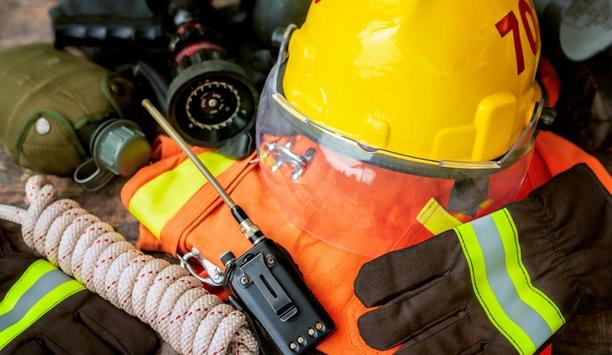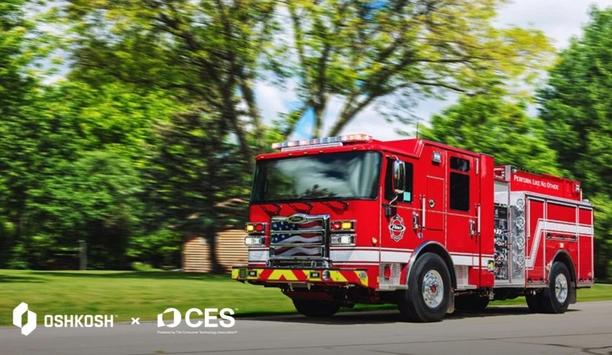 |
| Firewise Communities program to help property owners reduce their risk of wildfire damage |
NFPA report shows toll of brush, grass and forest fires on private property and local fire departments.
The National Fire Protection Association (NFPA) recently released findings of a report on local fire department responses to brush, grass and forest fires from 2004 through 2008. Local fire departments in the U.S. responded to an average of almost 1,000 such fires every day during that five-year period. These incidents accounted for 23% - nearly a quarter - of all fires reported to local fire departments. NFPA has called for increased participation in community-wide wildfire education and planning efforts, such as its Firewise Communities program, to help property owners reduce their risk for wildfire damage.
The report found human activity was the main cause of such fires. “Many of these fires could be prevented by following basic precautions,” said report author Marty Ahrens, manager of NPFA’s Fire Analysis and Research. “Tossing cigarettes on the ground, burning trash and ignoring fire bans are a recipe for disaster, especially during long stretches of dry weather,” said Ahrens.
While three-quarters (74%) of these fires burned less than an acre, local fire departments had to contend with an annual average of 4,800 buildings involved in brush, grass or forest fires during the five years covered by the study. More than 30,000 fires occurred per year at one or two-family homes. One of every five brush, grass or forest fires handled by local fire departments was intentionally set. While it may be more challenging to prevent someone from starting a fire, people can take steps to reduce the fuel load and prevent a fire from spreading after it starts.
Firewise Communities program helps residents minimize the risk of their home’s ignition from brush, grass and forest fires |
Offered Solutions:
NFPA’s Firewise Communities program helps residents minimize the risk of their home’s ignition from brush, grass and forest fires by using simple inexpensive steps to modify and clean up their homes and landscapes. In partnership with local fire departments and state foresters, more than 600 hundred communities across the U.S. have engaged local leaders, emergency responders and individual homeowners to make significant advances in making the community safer from wildfire.
“Many of these fires are threatening private property and could be avoided,” said Michele Steinberg, manager of the NFPA Firewise Communities program. “Homes and other structures do not have to burn; this property does not have to be lost. Being Firewise — adhering to burn bans, knowing your community’s risk for wildfire and reducing the available fuel around your home – are the first steps to prevent losses from wildfire. Firewise is how you play a role in your wildfire security,” said Steinberg. People can find information on how to protect their homes at firewise web site.
Statistics by region:
- Fifty-four percent of brush, grass, or forest fires handled by local fire departments occur in the South. The region has the highest rate for these fires per 1,000 square miles and the highest rate for grass and forest fires specifically.
- The Northeast had the second highest rate per 1,000 square miles for total brush, grass, and forest fires and forest wood or wildland fires specifically. It ranked third in the rate for grass fires.
- Local fire departments in the West ranked third in the percentage of U.S. brush, grass, and forest fires handled, but they had the lowest rate of fires per 1,000 square miles for all the fire categories studied. Although most of the largest wildland fires were in the West, many of these were on lands owned by federal or state government and were not protected by local fire departments as first responders.
- One of every five brush, grass, or forest fire responses handled by local fire departments occurred in the Midwest.
Preventing wildfires is a community activity. Individuals can take steps to make their own property safer but may be impacted by fire spreading from a neighboring site. The Firewise program is designed to involve a neighborhood or larger community and to recognize those communities that make this commitment.
Steps to Firewise Recognition:
- Enlist a wildland / urban interface specialist to complete a community assessment and create a plan that identifies agreed-upon achievable solutions to be implemented by the community.
- Sponsor a local Firewise Task Force Committee, Commission or Department which maintains the Firewise Communities/USA program and tracks its progress.
- Observe a Firewise Communities/USA Day each year that is dedicated to a local Firewise project.
- Invest a minimum of $2.00 per capita annually in local Firewise projects.
- Submit an annual report to Firewise Communities/USA that documents continuing compliance with the program.











